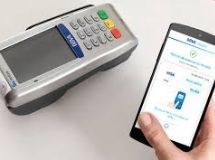What is the purpose of your business card? What is the purpose of all business cards? Have a look at your business card.
What does it say? It probably gives your name, your address, your office phone number, your mobile number, the name of your business, perhaps a list of services you offer, and maybe a logo.
Having a look at your business card file.
Are they all much the same? Do any of the business cards in your possession offer a benefit? Are there one or two that explain how to improve profits? Are there any that explain how to reduce waste, increase efficiency, get more customers or give a marketing tip? As you go through the business cards will find that the majority of them are like yours.
Bland and of low value.
There are some basic rules to increase the effectiveness of your business card and will guarantee that it is not filed in the waste paper basket.
Here are seven of them.
1)Design your card so it looks different to all the others in your collection.
The front of your business card should be attractive to your prospective customers.
It should look like something they would want to buy.
2)Make the title interesting, valuable and attractive.
Once you have found a title adapt it to your business.
For example, "Car Mechanic: 7 ways to be a petrol miser.
" "Business Consultant: 11 simple strategies for Staff Retention.
" "Personal Fitness Coach: 7 vital facts about nutrition.
" 3)Write a report or booklet.
Give it away free on your web site.
Set up your web page so that it can be downloaded when they give you their details.
These are added to your data base.
This means that you are adding to your database from your business card.
4)On your card avoid the word "subscribe.
" Give details of your web site.
The prospect is only interested in the contents of of the report or booklet.
When the prospective customer calls or visits your web site, you should tell them that they will be added to your mailing list-and that they can unsubscribe when ever they wish.
Make sure that you add the sentence, "Your details will be kept confidential and will not be passed or sold to any other person or organisation.
" 5)Use bullet points on the back of your card.
Let the prospect know what they can expect to get from the report or booklet.
Put at least five or seven enticing points.
Make the information compelling so that there is some urgency.
Get them to act straight away.
6)At the bottom of your card put your contact details.
This can be relatively small, unlike so many cards that are dominated by the name and logo.
7)Your business card should be designed to answer this question.
"What's In It For Me?" Your business card exists to communicate.
Don't design anything that makes it hard to read.
Remember that your business card is a sales tool.
If you must use a graphic designer, curb their natural instincts to make your card pretty or cute.
Things to avoid like the plague because they make it hard to read.
oReverse printing (White on a colour) oFancy fonts to look cute or pretty (Very hard to read) oAll capitals (Hard to read) oWishy-washy pastel colours (Very hard to read) Put yourself in the shoes of one of your prospective customers.
Ask yourself these three questions for each line of your proposed card.
"So what?" "Who cares?" "What Is In It For Me?"
What does it say? It probably gives your name, your address, your office phone number, your mobile number, the name of your business, perhaps a list of services you offer, and maybe a logo.
Having a look at your business card file.
Are they all much the same? Do any of the business cards in your possession offer a benefit? Are there one or two that explain how to improve profits? Are there any that explain how to reduce waste, increase efficiency, get more customers or give a marketing tip? As you go through the business cards will find that the majority of them are like yours.
Bland and of low value.
There are some basic rules to increase the effectiveness of your business card and will guarantee that it is not filed in the waste paper basket.
Here are seven of them.
1)Design your card so it looks different to all the others in your collection.
The front of your business card should be attractive to your prospective customers.
It should look like something they would want to buy.
2)Make the title interesting, valuable and attractive.
Once you have found a title adapt it to your business.
For example, "Car Mechanic: 7 ways to be a petrol miser.
" "Business Consultant: 11 simple strategies for Staff Retention.
" "Personal Fitness Coach: 7 vital facts about nutrition.
" 3)Write a report or booklet.
Give it away free on your web site.
Set up your web page so that it can be downloaded when they give you their details.
These are added to your data base.
This means that you are adding to your database from your business card.
4)On your card avoid the word "subscribe.
" Give details of your web site.
The prospect is only interested in the contents of of the report or booklet.
When the prospective customer calls or visits your web site, you should tell them that they will be added to your mailing list-and that they can unsubscribe when ever they wish.
Make sure that you add the sentence, "Your details will be kept confidential and will not be passed or sold to any other person or organisation.
" 5)Use bullet points on the back of your card.
Let the prospect know what they can expect to get from the report or booklet.
Put at least five or seven enticing points.
Make the information compelling so that there is some urgency.
Get them to act straight away.
6)At the bottom of your card put your contact details.
This can be relatively small, unlike so many cards that are dominated by the name and logo.
7)Your business card should be designed to answer this question.
"What's In It For Me?" Your business card exists to communicate.
Don't design anything that makes it hard to read.
Remember that your business card is a sales tool.
If you must use a graphic designer, curb their natural instincts to make your card pretty or cute.
Things to avoid like the plague because they make it hard to read.
oReverse printing (White on a colour) oFancy fonts to look cute or pretty (Very hard to read) oAll capitals (Hard to read) oWishy-washy pastel colours (Very hard to read) Put yourself in the shoes of one of your prospective customers.
Ask yourself these three questions for each line of your proposed card.
"So what?" "Who cares?" "What Is In It For Me?"
SHARE







































